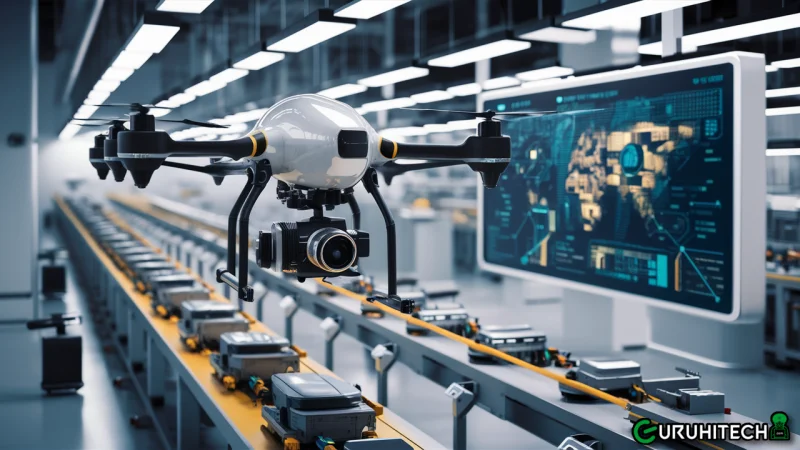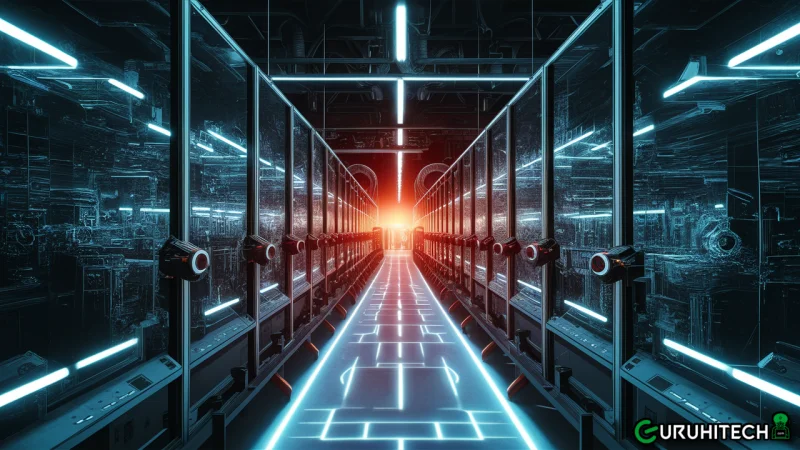Enhancing Visual Inspection in Manufacturing with IoT and Machine Learning

Visual inspection has long been a cornerstone of quality assurance in manufacturing. Traditionally, it involves human inspectors examining products to identify defects, ensure conformity to specifications, and uphold quality standards. However, with the advent of advanced technologies, the integration of Internet of Things (IoT) and Machine Learning (ML) into visual inspection processes is revolutionizing the manufacturing landscape. These technologies not only enhance the accuracy and efficiency of inspections but also provide valuable insights for continuous improvement.
The Role of IoT in Visual Inspection
Real-time Data Collection
IoT devices, such as smart cameras and sensors, play a pivotal role in modernizing visual inspection. These devices are strategically placed along the production line to continuously capture high-resolution images and other relevant data in real-time. According to Trafalgar Wireless, a leading IoT service provider in Georgia, this real-time data collection enables immediate detection of defects and anomalies, reducing the likelihood of defective products reaching the market.
Connectivity and Integration
IoT facilitates seamless connectivity between various components of the production line. This interconnected environment allows for the integration of visual inspection systems with other manufacturing systems, such as Enterprise Resource Planning (ERP) and Manufacturing Execution Systems (MES). This integration ensures that data flows smoothly across the organization, enabling a holistic view of the production process and facilitating data-driven decision-making.
Predictive Maintenance
IoT-enabled visual inspection systems can also monitor the health of equipment and machinery. By analyzing visual data, these systems can detect signs of wear and tear or potential failures before they occur. This predictive maintenance capability helps manufacturers avoid costly downtime and extend the lifespan of their machinery.
The Impact of Machine Learning on Visual Inspection

Advanced Defect Detection
Machine Learning algorithms excel at analyzing large volumes of visual data to identify patterns and anomalies. In the context of visual inspection, ML models can be trained to recognize a wide range of defects, from surface imperfections to structural flaws. These models continuously learn and improve over time, enhancing their accuracy and reducing the incidence of false positives and negatives.
Automation and Efficiency
By automating the visual inspection process, ML significantly increases inspection speed and efficiency. Automated systems can inspect hundreds or even thousands of items per minute, far surpassing the capabilities of human inspectors. This increased efficiency not only accelerates production but also frees up human workers to focus on more complex tasks that require critical thinking and problem-solving skills.
Quality Control and Consistency
One of the key advantages of ML in visual inspection is its ability to maintain consistent quality standards. Human inspectors are prone to fatigue and variability in judgment, which can lead to inconsistencies in defect detection. ML models, on the other hand, apply the same criteria uniformly across all inspections, ensuring consistent quality control and reducing the risk of defective products reaching consumers.
Synergizing IoT and Machine Learning in Visual Inspection
Data-Driven Insights
The synergy between IoT and ML in visual inspection creates a powerful feedback loop. IoT devices collect vast amounts of visual data, which ML algorithms analyze to extract meaningful insights. These insights can inform various aspects of the manufacturing process, from optimizing production parameters to improving product design. For instance, if an ML model identifies a recurring defect pattern, manufacturers can trace it back to its root cause and implement corrective actions.
Adaptive and Resilient Systems
The combination of IoT and ML enables visual inspection systems to be adaptive and resilient. IoT devices provide real-time updates on changing conditions in the production environment, while ML models dynamically adjust their parameters to maintain optimal performance. This adaptability ensures that the inspection system remains effective even as production conditions evolve.
Enhanced Decision-Making
IoT and ML together empower manufacturers with enhanced decision-making capabilities. By providing real-time visibility into the production process and predictive analytics, these technologies enable proactive management. Manufacturers can anticipate issues before they escalate, make informed decisions on the fly, and respond swiftly to changing market demands.
Benefits for Manufacturing Companies
Cost Reduction
Implementing IoT and ML in visual inspection can lead to significant cost reductions. Automated inspection reduces labor costs and minimizes the expenses associated with rework and scrap. Predictive maintenance helps avoid costly machine breakdowns, while data-driven insights optimize resource allocation and production processes.
Improved Product Quality
The primary objective of visual inspection is to ensure product quality. IoT and ML enhance this objective by providing precise and consistent defect detection. Higher product quality translates to increased customer satisfaction, reduced returns, and a stronger brand reputation.
Increased Throughput
Automation through IoT and ML dramatically increases inspection throughput. This higher throughput allows manufacturers to meet production targets more efficiently, reduce lead times, and respond faster to market demands. The ability to scale production without compromising quality is a significant competitive advantage.
Competitive Advantage
Manufacturers that leverage IoT and ML for visual inspection gain a competitive edge in the market. These technologies enable innovation, improve operational efficiency, and enhance product quality. Companies that adopt these advanced inspection methods are better positioned to meet the demands of modern consumers and outperform competitors.
Conclusion
The integration of IoT and Machine Learning into visual inspection processes is transforming the manufacturing industry. These technologies enhance the accuracy, efficiency, and consistency of inspections, providing valuable insights for continuous improvement. For manufacturing companies, the benefits are manifold, including cost reduction, improved product quality, increased throughput, and a competitive advantage. As IoT and ML continue to evolve, their impact on visual inspection will only grow, driving further advancements in manufacturing excellence.
Ti potrebbe interessare:
Segui guruhitech su:
- Google News: bit.ly/gurugooglenews
- Telegram: t.me/guruhitech
- X (Twitter): x.com/guruhitech1
- Bluesky: bsky.app/profile/guruhitech.bsky.social
- GETTR: gettr.com/user/guruhitech
- Rumble: rumble.com/user/guruhitech
- VKontakte: vk.com/guruhitech
- MeWe: mewe.com/i/guruhitech
- Skype: live:.cid.d4cf3836b772da8a
- WhatsApp: bit.ly/whatsappguruhitech
Esprimi il tuo parere!
Ti è stato utile questo articolo? Lascia un commento nell’apposita sezione che trovi più in basso e se ti va, iscriviti alla newsletter.
Per qualsiasi domanda, informazione o assistenza nel mondo della tecnologia, puoi inviare una email all’indirizzo [email protected].
Scopri di più da GuruHiTech
Abbonati per ricevere gli ultimi articoli inviati alla tua e-mail.
